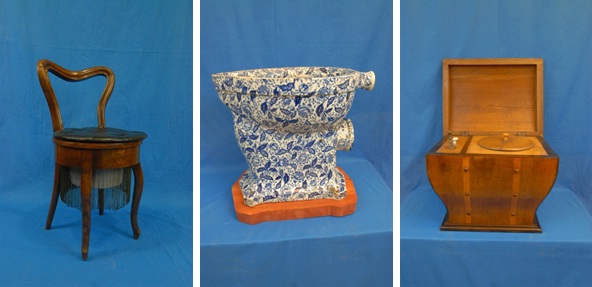Toilets
In the beginning, people went outside their houses when they needed to get rid of their excrement. After they stopped burying their excrement, they started to do their business on the manure heaps behind barns, where they shared the heaps with the livestock. They started to build small outhouses near the manure heaps. Toilets have undergone centuries of development, from gothic privets, where the excrement fell into moats or directly on the passers-by (famous sentence: “Further from the castle further so that we don’t have to scream bloody murder!”), through baroque walled extensions with sumps, to water closets, flush toilets which emptied into the sewers.
During the night, but for many even during the day, it was convenient to have a chamber pot under the bed, the contents of which they would pour out the window themselves or leave it to the maids. To achieve better comfort, they would later get toilet chests, chairs or armchairs. In later times, these also held toilet paper, which first arrived around 1860. In the meantime, humanity wiped with whatever, from moss and hay to silk, live ducklings and even kittens . Toilets were stored in bedrooms in a partially obscured corner. Because they fouled the air in the room, they began to be built into separate rooms. Dry toilets were later built on the first floors, frequently at the end of the corridor, because of the unpleasant odor.
In the museum, you will see the toilet chests, armchairs, chairs and stools, travel toilet chests, one of the first chemical toilets from USA, flush toilets pressed and painted with rich decor, replicas of baroque bridge toilets and examples of bidets, urinals, etc.










